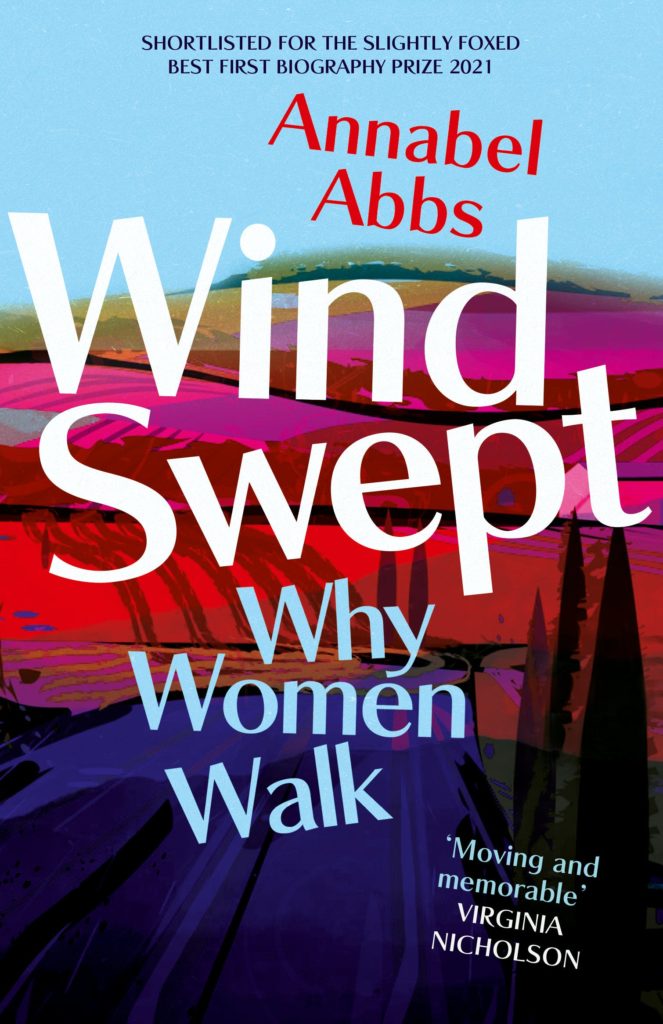In an extract from ‘Windswept: Why Women Walk’, newly published in paperback by Two Roads, Annabel Abbs considers Georgia O’Keeffe’s relationship with the sparse West Texan landscape.

[Georgia] O’Keeffe had always enjoyed taking walks, but in West Texas her walking subtly changed, becoming part of her sense of self rather than merely a pastime. In winter she stuffed newspapers under her coat to keep out the glacial winds. In the crackling summer heat, she returned home coated in thick red dust ‘the colour of the road’. ‘Oh, the sun was hot, and the wind was hard, and you got cold in the winter. I was just crazy about all of it,’ she recalled.
Later, she described the plains as ‘the only place that I ever felt I really belonged . . . that was my country – terrible winds and a wonderful emptiness’. Again and again she spoke of being restored by the ‘emptiness’, revived by the ‘nothingness’. Even in her nineties, when asked for her favourite place after her much-loved home – Ghost Ranch in New Mexico – she immediately replied ‘Amarillo, Texas’. Not Bermuda or Hawaii or Japan or any of the exotic places she’d visited and adored, but that savagely austere, waterless, treeless landscape where she first saw the curvature of the earth.
***
How does walking stop being something you do and become part of who you are?
Impatient for an answer, I leap out of bed, jet-lagged and disoriented. A sheet of paper on the kitchen table warns of winds that travel at forty miles an hour, rattlesnakes, poisonous centipedes, fanged flies that sting, roaming coyotes, lightening strikes and tornados. An extra paragraph in bold lists the number of people who die here annually from dehydration, falls, flash floods. A scroll of emergency telephone numbers follows. Finally, capital letters warn us not to walk near the cliffs. They are fragile, crumbling, DANGEROUS.
Outside, the sky is inky blue and vast, so vast the breath catches in my throat. In the corner of the sky hangs a fingernail moon, silver, ice-thin, minuscule in an ocean of darkness. I walk east down the track, towards a thread of pale light. The stillness and silence remind me of the Cairngorms. But the measureless space, the immense dome of sky, are like nothing I’ve ever experienced. As my eyes grow accustomed to the dark, I make out stunted, knotty bushes, barbed wire, sleeping cattle with long, curved horns.
A soft whooping call – an owl? – blows across the plains. A coyote howls. A dog barks. Then silence again. I have a strange sense of being on the very rim of the earth. Of being so microscopically small the sky could suck me in with a single breath. I follow the mud-beaten path that leads from our cabin. The sun begins to rise. And suddenly the long hem of the sky is on fire, ribbons of orange, lavender, rose. Within minutes the sun is up, flooding the world with pearly pink light. Before me, the flat land with its bleached buffalo grass unrolls on and on, cut from the huge bowl of sky by the narrowest and straightest of lines.
In first light, everything is round. I feel as if I’m wobbling on a vast ball, as if I’m the only person alive, as if I’m in the centre of the universe. Even as I balance on its lip, I have this odd feeling of being in the middle of the world. But I also feel ant-small. Dwarfed.
There’s nothing to impede my line of sight, nothing for my eyes to latch on to – no hills or mountains, no buildings or trees. Just me and land and sky. The space hums, limitless and terrifying, but I also feel contained by it. As if all its emptiness is holding me, wrapping itself around me so that I am its beating heart.
My hand gropes at my pocket but I resist the urge to whip out my phone. I want to absorb this place, to understand how it orients and disorients me at the same time.
I’d read an essay on the plane about the way certain landscapes plunge us into states of topographical sensory deprivation. The writer had speculated that for people with keen imaginations, being in topographical sensory deprivation was a potent means of being thrown back inside themselves, into the life of the mind. The empty landscape becomes a sort of incubator for thought or artistic expression. Put simply, if there’s nothing outside, our eye turns inward. It’s certainly true that O’Keeffe was propelled into making extraordinary paintings that came ‘from inside my own head’ during her Texan years.
But this theory underplays how much the landscape spoke to her. She spent much of her life paring things back, always reducing and simplifying the struts of her life. She only wore black and white. She kept her face bare of make-up and her hair free of styling and colouring. Her homes contained very little furniture: she liked the walls bare and the chairs covered in plain white slips; she insisted curators hang her art on plain white walls. ‘I like to have things as sparse as possible,’ she once said.
As I walk back to the cabin, blue clouds are massing softly in the sky. With nothing to hold my gaze, the firmament takes on a new significance. I notice how the clouds have shapes and forms and twists at the end like knotted handkerchiefs or rabbits’ tails. Some are smudges, drifting and meandering. Others are dense and billowing. Beyond them float wisps of cirrus, like shreds of candyfloss. As I stare into the sky I feel lightened in some way. As if a slip of cloud has eased itself between the sole of my boot and the earth.
*
‘Windswept’ is out now and available here (£10.22).